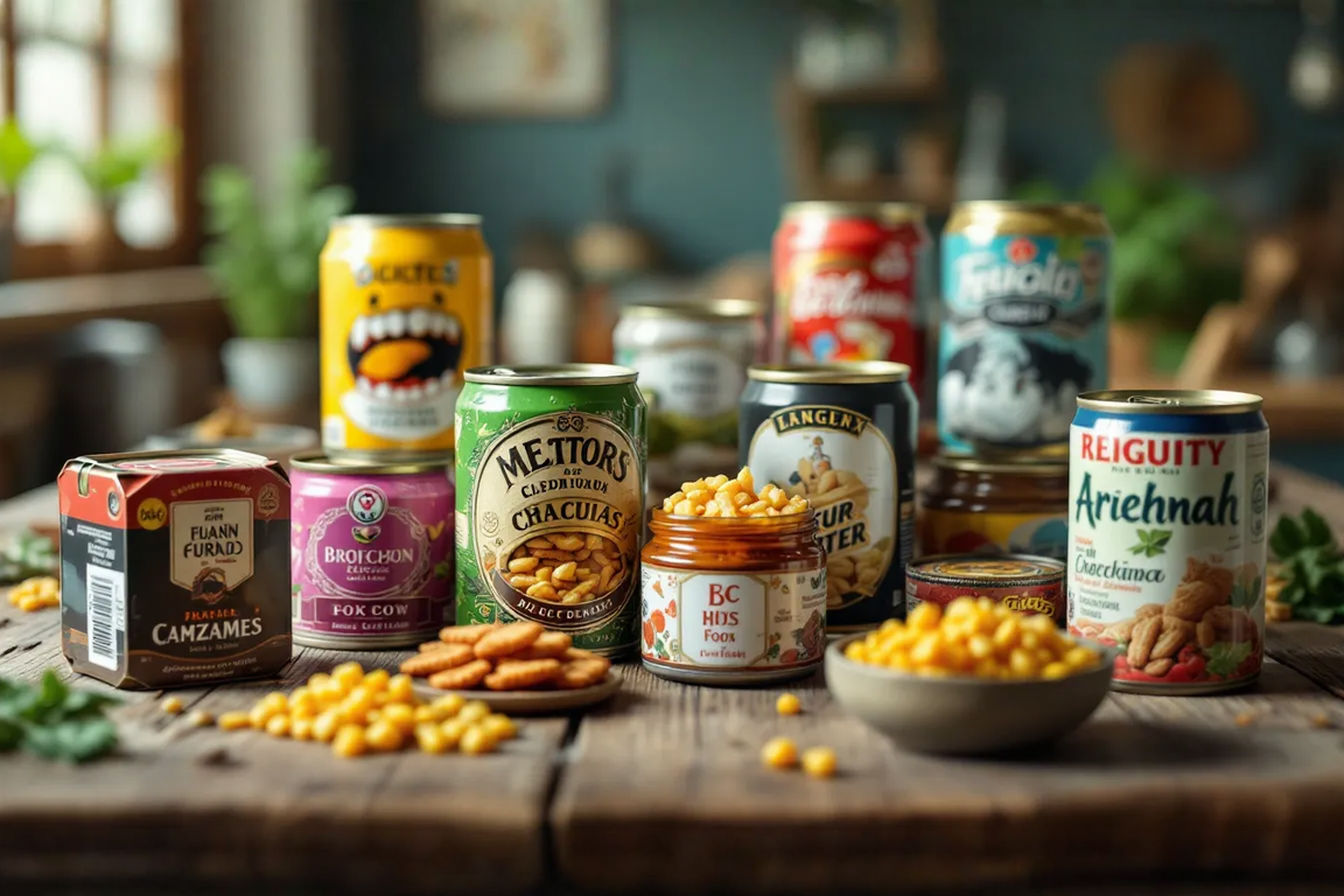This post may contain affiliate links. If you make a purchase through these links, we may earn a commission at no additional cost to you.
In a world where culinary experiences increasingly define our travels, adventurous eaters seek more than just Instagram-worthy meals—they hunt for authentic cultural connections through food. Venturing beyond familiar flavors offers insights into traditions and histories that guidebooks often miss. The strange, unusual, and sometimes shocking foods found across different cultures represent centuries of innovation, necessity, and celebration.
This guide explores thirteen of the world’s most unusual delicacies that, despite their initial strangeness to Western palates, offer worthwhile culinary experiences. These foods might challenge your perception of what’s edible, but each carries cultural significance that makes them valuable experiences for the truly curious traveler.
The Cultural Significance of Unusual Foods
Before diving into our list, it’s worth considering that “strange” is entirely relative. What seems bizarre to one culture represents comfort food to another. These perceptions stem from cultural upbringing, historical necessity, and regional availability of ingredients.
Traditional foods develop over generations as communities utilize available resources, preserve seasonal abundance, and celebrate their identity through cuisine. When we dismiss unfamiliar foods as “gross” or “weird,” we miss opportunities to understand the ingenuity and adaptation that shaped them.
Culinary adventurousness while traveling opens doors to authentic cultural exchanges. Locals often appreciate visitors who respect their food traditions enough to try them. These moments create connections that transcend language barriers and tourist clichés.
Now, let’s explore thirteen strange yet culturally significant foods from around the world that deserve at least one brave taste.
1. Hákarl (Iceland)
This Icelandic delicacy consists of fermented Greenland shark meat, a process developed out of necessity by Vikings who needed to make poisonous shark meat edible. The preparation involves burying shark pieces for 6-12 weeks, then hanging them to dry for several months.
The result emits an intense ammonia smell that even Anthony Bourdain described as “the single worst, most disgusting thing I’ve ever put in my mouth.” Yet hákarl represents Icelandic resilience and resourcefulness during harsh winters when food options were limited.
The traditional way to consume hákarl involves small cubes on toothpicks, often accompanied by a shot of Brennivín (Icelandic schnapps) to help wash it down. The taste combines strong ammonia with fishy flavors and an unusual chewy texture.
Despite its challenging characteristics, hákarl offers a direct connection to ancient Nordic food preservation techniques that sustained communities through brutal winters.
2. Casu Marzu (Sardinia, Italy)
Perhaps one of the most notorious strange foods, casu marzu takes cheese fermentation to extraordinary levels. This Sardinian sheep milk cheese contains live insect larvae that break down fats, creating a soft, sometimes liquid texture.
The cheese-making process begins traditionally, but then cheese flies are introduced to lay eggs. As larvae hatch, they consume the cheese, transforming its proteins and fats. The result is a pungent cheese with a flavor profile that aficionados describe as intense but transcendent.
Eating casu marzu traditionally happens during special occasions and celebrations in Sardinia. Consumed with strong local bread and wine, the experience connects participants to centuries of pastoral traditions.
Health regulations have limited legal production, making authentic casu marzu increasingly rare. For the serious culinary adventurer, finding it requires personal connections with Sardinian shepherds who maintain this controversial tradition.
3. Century Eggs (China)
Despite their intimidating name, century eggs (also called pidan or hundred-year eggs) typically age for just a few months, not centuries. Chinese cooks preserve duck, chicken, or quail eggs in a mixture of clay, ash, salt, quicklime, and rice hulls.
This preservation process transforms the eggs dramatically. The whites become a translucent dark brown or black with a gelatinous texture, while yolks develop a creamy, cheese-like consistency with greenish-gray coloring and distinctive patterns.
Century eggs offer complex flavors that combine creamy, cheese-like notes with mineral and slightly sulfuric undertones. They typically appear in congee (rice porridge), as appetizers with pickled ginger, or in cold dishes that showcase their unique appearance.
This preservation technique dates back over 600 years and represents Chinese ingenuity in extending food stability before refrigeration existed. The resulting delicacy provides protein and nutrients while developing flavors impossible to achieve through other cooking methods.
4. Balut (Philippines)
A street food staple throughout the Philippines, balut consists of a fertilized duck egg containing a partially developed embryo, boiled and eaten from the shell. Vendors sell them as convenient protein-rich snacks, particularly during evening hours.
Typically consumed when the embryo has developed for 16-20 days, balut offers several textures in one food: savory broth, firm egg white, creamy yolk, and the embryonic duck itself. The taste resembles a rich, concentrated chicken flavor with unique textural elements.
Eating balut follows a specific protocol: crack the wider end, sip the broth, season with salt or vinegar with chili, then eat the contents with a spoon. Filipinos consider it both an everyday snack and an aphrodisiac.
Beyond the Philippines, variations appear in Vietnam (hot vịt lộn), Cambodia (pong tea khon), and other Southeast Asian countries. Each culture has developed specific serving methods and accompaniments that showcase regional preferences.
5. Surströmming (Sweden)
Perhaps the world’s most pungent food, surströmming consists of Baltic Sea herring fermented just to the point before decomposition. The fermentation process produces such powerful odors that many Swedes open the cans outdoors or underwater to mitigate the smell.
The fish undergoes preservation through a limited salt fermentation, allowing bacteria to continue working on the fish. This technique developed centuries ago to preserve summer catches through long northern winters.
Proper consumption involves wrapping the fish in tunnbröd (flatbread) with butter, boiled potatoes, diced onion, sour cream, and sometimes tomato. These accompaniments help balance the intense fishiness and acidity of the fermented herring.
Despite its challenging reputation, surströmming represents an important cultural heritage for northern Swedes. Traditional surströmmingsskiva (surströmming parties) bring communities together during August and September when the previous year’s batch reaches perfect fermentation.
6. Fugu (Japan)
Few foods carry the mystique and danger of fugu, the Japanese pufferfish containing tetrodotoxin—a poison 1,200 times more deadly than cyanide. Only licensed chefs with years of training can legally prepare this delicacy in Japan.
The allure comes partially from the risk but primarily from the fish’s subtle flavor and unique texture. Chefs typically serve fugu as paper-thin sashimi slices arranged in chrysanthemum patterns, in hot pots (fugu nabe), or as crispy fried karaage.
Tetrodotoxin creates a distinctive tingling sensation on the lips and tongue that enthusiasts prize as part of the experience. The flesh itself offers a clean, mild flavor with exceptional firmness that’s unlike other fish.
Beyond the culinary experience, fugu represents Japanese perfectionism and dedication to craft. The required three years of intensive training and licensing demonstrates the culture’s commitment to pursuing difficult skills to their highest expression.
7. Cuy (Peru)
Known to English speakers as guinea pig, cuy has been a protein staple in Andean communities for approximately 5,000 years. Far from being viewed as pets, these animals represent an important sustainable meat source in Peru, Ecuador, and Bolivia.
Traditional preparation involves roasting whole cuy on spits (cuy al palo) or baking them in wood-fired ovens until the skin becomes crispy while the meat remains tender. The flavor resembles rabbit or dark chicken meat with a distinctive gaminess.
Cuy holds cultural significance beyond nutrition. In indigenous Andean communities, the animals play roles in religious ceremonies and traditional medicine. During special occasions, families may sacrifice particularly prized cuy as offerings.
For travelers in the Andes, trying cuy provides insight into pre-Columbian food traditions that sustained advanced civilizations at high altitudes where other protein sources were limited. Today, upscale restaurants in Lima and Cusco offer modern interpretations alongside traditional preparations.
8. Durian (Southeast Asia)
Called the “king of fruits” throughout Southeast Asia, durian generates passionate devotion and disgust in equal measure. The large, spiky fruit emits such a powerful odor that many hotels and public transportation systems throughout Asia ban it entirely.
Descriptions of durian’s smell range from rotting onions to gym socks, but enthusiasts focus on its complex flavor profile. The creamy yellow flesh offers sweet, savory, and bitter notes simultaneously—combining flavors reminiscent of caramel, almonds, vanilla, and onions.
Different durian varieties produce distinctly different flavor profiles. Malaysian Musang King delivers intense sweetness with bitter undertones, while Thailand’s Monthong offers a milder introduction for newcomers with more custard-like consistency.
Culturally, durian symbolizes abundance and sensuality throughout Southeast Asia. Traditional wisdom suggests balancing durian’s “heating” properties by consuming “cooling” fruits like mangosteen afterward. Despite its challenging introduction, many travelers develop strong cravings for durian after multiple exposures.
9. Escamoles (Mexico)
Often called “Mexican caviar,” escamoles consist of ant larvae harvested from the roots of agave plants. These small, pearl-like eggs have been considered a delicacy since Aztec times, particularly prized for their nutty flavor and distinctive texture.
Harvesting escamoles requires skill to extract the larvae without disturbing the entire colony. This labor-intensive process contributes to their high cost and status as a luxury ingredient in Mexican cuisine.
Traditional preparation keeps things simple: escamoles sautéed in butter with epazote herbs and chile, then served in warm tortillas. The larvae maintain their shape when cooked, providing a soft pop similar to caviar but with earthy, nutty flavors reminiscent of pine nuts.
The spring harvesting season coincides with important religious celebrations, making escamoles part of feast traditions in central Mexico. Their appearance marks seasonal transitions and connects modern Mexican cuisine to its pre-Hispanic roots.
10. Haggis (Scotland)
This Scottish national dish combines sheep’s heart, liver, and lungs with onions, oatmeal, suet, and spices, all encased in the animal’s stomach and simmered for hours. While the ingredient list sounds challenging, the result resembles a crumbly, savory sausage with complex flavors.
Haggis embodies Scottish resourcefulness—utilizing all parts of the animal during times when food waste was unthinkable. The oatmeal and spices transform offal into a satisfying dish that provides substantial nutrition.
Traditional serving includes “neeps and tatties” (mashed turnips and potatoes) with a dram of Scotch whisky. The combination balances the rich, spiced meat with creamy vegetables and the warming complexity of whisky.
Beyond its culinary role, haggis holds ceremonial significance during Burns Night celebrations on January 25th. The dish’s entrance accompanied by bagpipes and recitation of Robert Burns’ “Address to a Haggis” demonstrates how food becomes intertwined with national identity and cultural pride.
11. Shirako (Japan)
This Japanese delicacy consists of cod sperm sacs, served during winter when male fish reach reproductive maturity. The name translates poetically to “white children,” referring to the creamy white appearance of this unusual ingredient.
Chefs prepare shirako in various ways: poached in hot pot dishes, lightly fried in tempura batter, or served raw as sashimi with ponzu sauce. The texture resembles soft custard or brain tissue—creamy and delicate with a mild oceanic flavor.
Within Japanese cuisine, shirako represents the cultural value of utilizing the entire fish and appreciating seasonal specialties. Its winter availability makes it part of the traditional kaiseki dining experience that celebrates nature’s cycles.
For visitors to Japan, trying shirako provides insight into the culture’s approach to food without waste and the appreciation of subtle flavors. The experience challenges Western notions of what constitutes desirable seafood while opening doors to understanding Japanese culinary aesthetics.
12. Mopane Worms (Southern Africa)
These plump, colorful caterpillars of the emperor moth represent an important protein source across Zimbabwe, Botswana, South Africa, and Namibia. Harvested from mopane trees during the rainy season, they provide essential nutrition in regions where meat can be scarce or expensive.
Traditional preparation involves squeezing out the intestinal contents, then sun-drying or smoking the worms to preserve them. Before eating, they’re rehydrated and fried with onions, tomatoes, and spices or simply enjoyed as crunchy snacks.
The flavor profile combines earthy, mineral notes with a distinct umami quality. The texture varies based on preparation—from chewy to crispy—but always maintains some firmness from the outer skin.
Beyond nutritional value, mopane worms represent sustainable protein with minimal environmental impact. Their harvest creates economic opportunities, particularly for women in rural communities who collect and process them for both family consumption and commercial sale.
13. Kiviak (Greenland)
Perhaps the most extreme preservation method on our list, kiviak consists of approximately 500 small seabirds (little auks) fermented inside a hollowed-out seal carcass. After stuffing the seal with birds, Inuit seal all openings and place the package under rocks for 3-18 months of fermentation.
This extraordinary preservation technique developed in Greenland where extreme weather conditions and limited winter hunting opportunities necessitated creative food storage. The seal fat prevents the birds from exposure to air while allowing fermentation.
To consume kiviak, Inuit pull out the fermented birds and eat them whole, except for the feathers. The flesh becomes soft with an extremely pungent cheese-like flavor and aroma due to the advanced fermentation.
Traditionally reserved for celebrations and the darkest winter months, kiviak represents human ingenuity in one of Earth’s most challenging environments. While few visitors have opportunities to taste authentic kiviak, its existence demonstrates how necessity drives culinary innovation.
Tips for Trying Unusual Foods
For those inspired to expand their culinary horizons, approaching strange foods requires both openness and practical preparation. Consider these strategies for successful food adventures:
Start with an open mindset focused on cultural appreciation rather than novelty-seeking. Understanding the history and significance behind unusual foods transforms the experience from a dare to a meaningful cultural exchange.
Research proper eating techniques before trying strange foods. Many unusual delicacies have specific consumption methods that enhance their flavors or make the experience more accessible for newcomers.
Consider safety concerns, particularly with fermented or raw specialties. Choose reputable establishments when trying potentially risky foods like fugu or raw preparations. Some travelers benefit from probiotic supplements before encountering heavily fermented foods.
Respect cultural contexts surrounding food. Some unusual delicacies hold sacred or ceremonial significance. Approach these experiences with appropriate reverence rather than treating them as exotic curiosities.
Remember that authentic food experiences rarely happen in tourist areas. Seek guidance from locals or food tour guides with community connections to find genuine versions of traditional strange foods.
How to Prepare Your Palate for Strange Foods
Culinary adventurousness develops gradually. These strategies help build tolerance for unfamiliar flavors and textures:
Begin with milder entry points into unusual cuisine. Before trying hákarl, start with mildly fermented fish. Before casu marzu, experiment with strong but commercially available cheeses.
Pay attention to accompaniments that locals pair with strange foods. These combinations develop over generations to balance challenging flavors. The shot of Brennivín with hákarl or rice with century eggs serves specific culinary purposes.
Understand that texture often presents a greater challenge than flavor. Practice mindfulness while eating to separate texture responses from taste reactions. This awareness helps overcome initial texture aversions.
Consider flavor bridges between familiar foods and strange ones. Durian’s complexity becomes more approachable when thinking of it as combining elements of custard, caramel, and savory components rather than as a singular “strange fruit.”
Small portions allow exploration without overwhelming the palate. Most culinary traditions serving unusual foods understand this principle and offer appropriate serving sizes for first-time tasters.
Conclusion
Strange foods represent more than culinary dares or Instagram opportunities—they embody human creativity, cultural identity, and historical necessity. When we approach unusual delicacies with respect and openness, we gain deeper understanding of how communities adapt to their environments and express their values through food.
The thirteen foods in this guide merely scratch the surface of global culinary diversity. Each unusual dish offers a window into different ways of defining what’s delicious and nutritious. These perspectives enrich our own relationships with food.
By venturing beyond culinary comfort zones, travelers transform eating from mere sustenance into meaningful cultural exchange. The memories created while sharing strange foods with locals often become highlights of international experiences—moments of genuine connection beyond tourist attractions.
Whether you’re planning specific food-focused travel or simply remaining open to culinary adventures, remember that each strange food represents generations of human experience and wisdom. That awareness transforms potentially intimidating foods into fascinating expressions of our shared humanity.
Additional Resources
For deeper exploration of global unusual foods, these resources provide valuable insights:
Food Tours Specializing in Unusual Delicacies:
- Atlas Obscura Gastro Obscura Food Tours (worldwide unusual food experiences)
- Bangkok Bizarre Food Tours (Thailand)
- Mysterious Iceland Tours (featuring traditional fermented specialties)
Books on Global Unusual Cuisines:
- “Bizarre Foods” by Andrew Zimmern
- “What’s Eating What’s Eating You?” by Eugene Kaplan
- “Eating with Your Anorexic” by Laura Collins
Documentaries About Strange Foods:
- “Bizarre Foods with Andrew Zimmern” (Travel Channel series)
- “Chef’s Table” (Netflix series, various episodes featuring unusual ingredients)
- “Search for General Tso” (exploration of Chinese-American cuisine)






